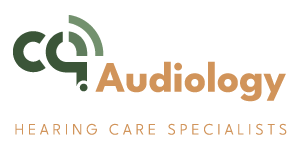Contact Us
We would love to speak with you.
Feel free to reach out using the below details.
Visit our main clinic
- T33 & 34A, City Centre Plaza, 24 Fitzroy Street, Rockhampton, QLD 4700
Get In Touch
- (07) 4848 6528
- reception@cqaudiology.com.au
Hours
- Mon-Fri 9:00AM - 5:00PM
- Sat 9:00AM - 12:00PM
Get a callback
Fill out the form below and we will contact you as soon as possible!
CQ Audiology Visiting Sites
BARCALDINE
Barcaldine 60 & Better Program
13 Willow Street
QLD 4725
BILOELA
Ace Medical Centre
48 Grevillea Street
QLD 4715
BLACKALL
Blackall Hospital
189 Landsborough Highway
QLD 4472
BLACKWATER
North Blackwater General Practice
14 Blain Street
QLD 4717
EMERALD
Lot 1 Pilot Farm Road
QLD 4720
MOUNT MORGAN
41 Morgan Strreet
QLD 4714
ROCKHAMPON CITY
T 33 & 34A City Centre Plaza
24 Fitzroy Street
QLD 4700
TAMBO
Tambo Multi Purpose Centre
26 Arthur Street, Tambo Queensland 4478
LONGREACH
North & West Queensland Primary Health Sercvies
19 Duck Street, Longreach Queensland 4730
YEPPOON
Keppel Bay Medical Centre
Shopt 26, Keppel Bay Plaza
64-67 James Street
QLD 4703

Hearing Test Barcaldine
Taking a hearing test is an essential step in maintaining your hearing health. This simple, painless assessment can identify issues before they affect your quality of life. Early detection can help prevent the feelings of isolation and depression that often accompany untreated hearing loss, and can provide access to a wider range of treatment options.
The test, which usually takes 30 minutes to an hour, will be conducted by an audiologist or hearing specialist who will guide you through the process. You will have the opportunity to learn about the various types of hearing tests available and understand what to expect from your results.
Importance of Early Detection
Detecting hearing loss early on can significantly impact your quality of life. Taking action to address the issue before it worsens helps prevent feelings of isolation and depression that often accompany hearing loss.
When you can hear clearly, you’re more likely to stay engaged with the world around you, maintain relationships, and participate fully in activities you enjoy.
If left untreated, hearing loss can lead to decreased cognitive function, reduced earnings, and an increased risk of falls and other accidents.
Diagnosing hearing loss early allows you to take steps to mitigate these risks and maintain your overall well-being. Early detection also provides access to a wider range of treatment options, including various devices that can significantly improve your ability to hear and communicate.
Early detection is crucial. Addressing hearing loss promptly is a proactive decision to prioritise your health, relationships, and overall quality of life.
How Hearing Tests Are Conducted
When you attend a hearing test, you’ll be met by an audiologist or hearing specialist who’ll guide you through the process.
They’ll start by asking you a series of questions about your medical history, including any previous hearing problems or ear surgeries.
You will then be seated in a soundproof room, where you’ll wear headphones and respond to sounds played through them.
The audiologist will instruct you to raise your hand or press a button when you hear a sound. This is called a pure-tone test, and it helps the specialist determine the softest sounds you can hear at different frequencies.
The test will also assess your ability to understand speech in different listening environments. You may be asked to repeat words or sentences, and the audiologist will adjust the volume to determine the softest level at which you can understand them.
Throughout the test, the audiologist will be taking notes and using specialised equipment to assess your hearing.
The entire process is painless and usually takes about 30 minutes to an hour to complete.
Types of Hearing Tests Available
When preparing for a hearing test, it’s helpful to know that several types of tests are available, each assessing different aspects of your hearing.
You’ll likely undergo a pure tone audiometry test, which measures your ability to hear sounds at various frequencies. This test involves wearing headphones and responding to sounds of different pitches and volumes.
You may also have a speech audiometry test, which assesses your ability to understand spoken words in various environments. This test involves listening to words and sentences at different volumes and responding to what you hear.
Some tests, such as tympanometry, evaluate the middle ear function, while others, like otoacoustic emission testing, check the inner ear’s function.
Additional tests, including auditory brainstem response (ABR) testing and auditory steady-state response (ASSR) testing, may be used to assess the auditory nerve and brainstem. These tests help diagnose hearing loss and identify potential underlying causes.
An audiologist or hearing specialist will determine which tests are necessary based on your specific needs and concerns. Understanding the types of hearing tests available will better prepare you for the testing process and inform you about your hearing health.
Understanding Your Test Results
Breaking down your hearing test results can be overwhelming, but it’s essential to grasp what they mean to address any hearing issues.
You’ll typically receive an audiogram, a graph showing the softest sounds you can hear at different frequencies. The audiogram has two sections: air conduction and bone conduction. Air conduction tests your ability to hear sounds through your ears, while bone conduction tests your ability to hear sounds through your skull.
Your test results will indicate the degree of hearing loss, categorised as normal, mild, moderate, severe or profound. You may also see terms like “sensorineural” or “conductive” hearing loss, referring to the type of hearing loss.
Your audiologist will explain these terms and their impact on your hearing. Discuss your results with your audiologist to ensure you understand your specific hearing needs and the best course of action. This will equip you to make informed decisions about your hearing health.
Maintaining Healthy Hearing Habits
Maintaining healthy hearing habits is crucial for your overall well-being. Various aspects of daily life can impact your hearing health, including exposure to loud noises and certain medications. Loud noises are more common than you think, and can be encountered at concerts, sporting events, or even while mowing the lawn. These loud sounds can damage your hair cells, leading to permanent hearing loss.
To protect your hearing, take steps such as wearing earplugs or earmuffs when you know you’ll be around loud noises. You can also reduce the volume on your music and take regular breaks to give your ears a rest.
If you’re taking medications, consult your doctor about potential hearing risks. Certain medications, such as antibiotics and chemotherapy, can affect your hearing.
Regular hearing tests can help identify any hearing problems early on. Making lifestyle changes can also promote healthy hearing. Avoid putting objects, like cotton swabs, in your ears, as this can push wax further into your ear canal.
DISCLAIMER: The content on our site is intended for educational purposes only and should not be interpreted as an endorsement or recommendation of any treatments or products without a comprehensive hearing assessment. Users should seek professional advice and fully understand any potential side effects or risks before starting any treatment. Products mentioned on our site are not available for purchase by the public without prior consultation with a hearing health expert.
